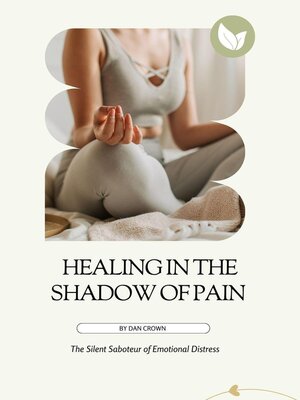
Sign up to save your library
With an OverDrive account, you can save your favorite libraries for at-a-glance information about availability. Find out more about OverDrive accounts.
Find this title in Libby, the library reading app by OverDrive.



Search for a digital library with this title
Title found at these libraries:
| Library Name | Distance |
|---|---|
| Loading... |
In the complex interplay between mind and body, pain occupies a central and often misunderstood role. Alcodistrophy, a term suggesting a failure of a body part to heal properly due to persistent pain, can be extended metaphorically to describe the impact of unresolved emotional pain on overall well-being. This book introduces the concept of alcodistrophy, exploring how emotional and physical pain are deeply interconnected, and sets the stage for understanding the profound effects of psychological self-sabotage on healing.
The Dual Nature of Pain
Pain is traditionally categorized into two distinct forms: physical and emotional. However, modern neuroscience has illuminated that these forms of pain are processed in overlapping areas of the brain, notably the prefrontal cortex and cingulate cortex. This neurological overlap explains why emotional pain, such as heartbreak or grief, can manifest as physical symptoms like headaches, muscle tension, or gastrointestinal issues.
Emotional Pain as a Saboteur
Unresolved emotional pain acts as an insidious saboteur, hindering the body's natural healing processes. When individuals hold onto emotional distress, whether it be due to trauma, grief, or chronic stress, their bodies often remain in a heightened state of alert. This state, driven by the sympathetic nervous system, leads to the continuous release of stress hormones like cortisol, which can impair the immune system and slow down physical recovery.
For example, consider someone who has experienced significant trauma. Even after the physical wounds have healed, the psychological scars may persist, causing the body to react as if the threat is still present. This phenomenon is supported by research showing that individuals with a history of trauma have a different physiological response to stress, often experiencing exacerbated symptoms during stressful situations.







